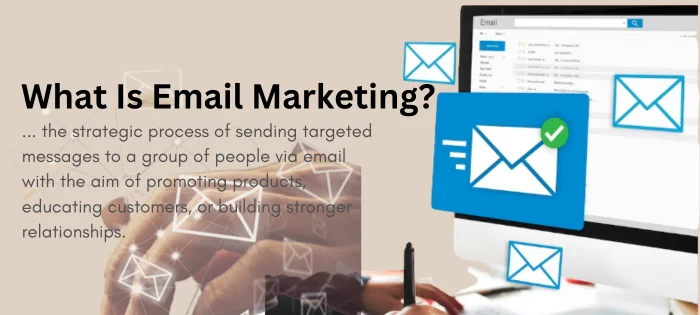What Is Email Marketing?
Right off the bat, email marketing is the cornerstone of digital engagement.
It is the strategic process of sending targeted messages to a group of people via email with the aim of promoting products, educating customers, or making first contact.
In a time where attention, personalization, and owned audience have become an absolute necessity, one tool stands tall above the rest in its effectiveness and efficiency – Email Marketing.
With the power to reach audiences on a global scale, this stalwart of digital marketing offers a direct line of communication to your audience, a means of building loyal relationships, and an avenue for driving impactful results and making money online.
Introduction
Every day, over 347.3 billion+ emails are sent and received, now that’s something right there. Amid this ocean of emails, you may wonder, ‘how can my message stand out?’.
The answer is through strategic, personalized email marketing.
Email marketing is much more than the act of sending promotional emails.
It is a well-calculated, segmented, and targeted approach that enables you to communicate directly with your audience— website visitors, your product users, leads, followers, and subscribers—, nurture leads, foster customer loyalty, and boost sales.
And the ability to reach into a customer’s inbox and generate a personal connection is power, and email marketing offers you just that when you use the right tools.
In essence, email marketing is one of the foundations for building customer relationships and driving business growth in today’s digital atmosphere.
Definitions
- Transactional Approach: Email marketing, in the transactional context, is the use of email to directly promote a product or service with the aim of generating sales. This often involves sending targeted messages to a list of subscribers, including information about new products, discounts, and special promotions, with a call-to-action that leads to a transaction, such as buying a product or signing up for a service.
- Relational Approach: In a relational context, email marketing is a digital communication strategy that focuses on building and nurturing long-term relationships with customers or clients. This could include sending regular newsletters, personalized content, educational materials, or updates about the company to engage the audience, enhance customer loyalty, and maintain top-of-mind awareness.
- Informational Approach: Email marketing, from an informational perspective, is the use of email to deliver valuable information to a specific audience, positioning the sender as an expert or thought leader in their field. This could include tips and advice, industry news, research findings, or other educational content. While not directly promotional, the aim is to build credibility and trust, which can indirectly lead to increased sales or customer loyalty.
The Power of Email Marketing

Digital marketing is teeming with different strategies: SEO, social media marketing, content marketing, and more.
However, email marketing remains one of the most powerful among them.
Why?
Because of its massive reach, high ROI, and the ability to offer personalized customer experiences.
1. Unparalleled Reach:

With over 4 billion email users worldwide, only a few other platforms come close to emails when it comes to reaching potential customers.
It’s an audience that’s too large to ignore.
2. High ROI:

Email marketing is incredibly cost-effective, offering a staggering average ROI of 3800%, or $38 for every dollar spent.
3. Personalization:

Email marketing allows for personalization, which is crucial as customers always desire and expect personalized experiences and a sense of exclusivity.
With segmentation and automation, emails can be personalized to match the customer’s journey, enhancing engagement and conversions.
Building an Effective Email Marketing Strategy
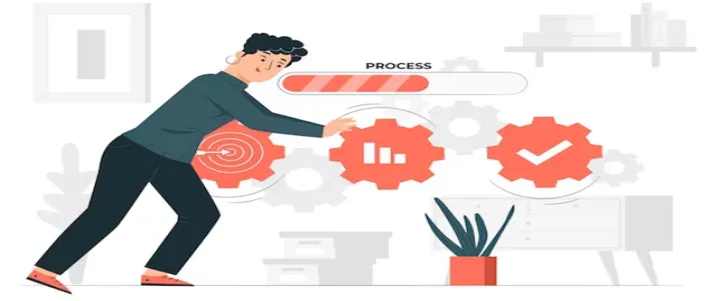
The cornerstone of successful email marketing lies in a sound, well-thought-out strategy.
Here’s how you can build one:
1. Define Your Goals:

Sounds very generic, but like any marketing endeavor and most things in life, you want to start by defining what you want to achieve.
Do you want to…
- drive more website traffic,
- increase sales, or
- enhance customer loyalty?
Having clear goals in mind will guide your email marketing strategy and help measure its success.
2. Build Your Email List:
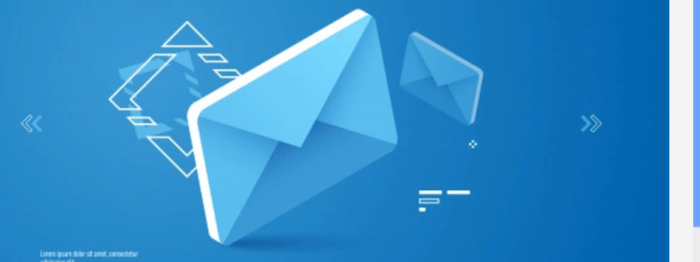
An email list is your most valuable asset.
Invest time in growing your list with quality contacts.
This can be done through lead magnets, sign-up forms, social media promotions, or any other way that complies with ethics.
3. Segment Your List:

Segmenting your email list allows you to deliver the right content to the right person at the right time.
You can segment based on various criteria like:
- demographics,
- past purchases,
- browsing behavior,
- etc.
4. Create Engaging Content:
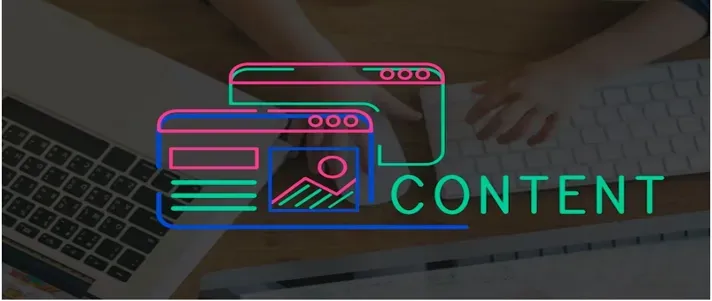
Of course, your emails should offer immense value to the reader.
You can achieve this if you craft compelling subject lines, use visually appealing graphics, and most importantly, ensure the content resonates with the recipient and aligns with your goals.
5. Test and Analyze:

Always A/B test different components of your email to see what works best.
- A/B testing in email marketing refers to the experimental method where two versions of an email campaign (version A and version B) are sent to different subsets of a recipient list to measure and compare the effectiveness of each. This test can involve variations in email content, subject lines, images, call-to-action buttons, or send times. The version that results in higher user engagement, open rates, click-through rates, or conversions is then used for the broader audience. It’s a data-driven strategy that helps email marketers optimize their campaigns based on empirical evidence.
Analyze metrics like open rates, click-through rates, and conversion rates to gauge the effectiveness of your emails and optimize future campaigns.
Understanding Email Marketing Metrics
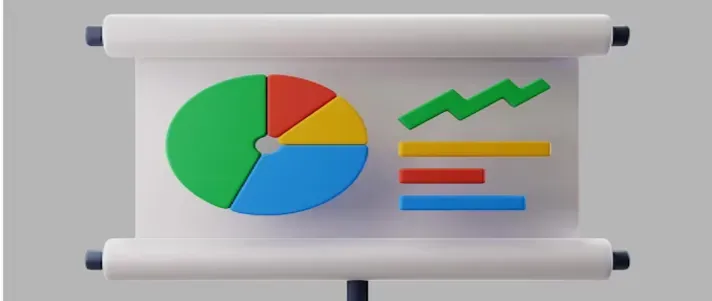
Email marketing isn’t a ‘set and forget’ strategy, even though I wish it was.
It requires constant testing, analyzing, and tweaking.
Here are the key metrics to consider:
- Open Rate: This shows the percentage of recipients who opened your email. A low open rate could indicate issues with your subject line or sender name.
- Click-Through Rate (CTR): CTR indicates the percentage of email recipients who clicked on one or more links in an email. It helps assess the effectiveness of your content and call-to-actions (CTAs).
- Unsubscribe Rate: This shows the percentage of recipients who unsubscribed after receiving an email. A high unsubscribe rate might indicate that your content isn’t resonating with your audience or that you’re sending emails too frequently.
- Bounce Rate: This reflects the percentage of emails that couldn’t be delivered to the recipient’s inbox. A high bounce rate could be due to invalid email addresses on your list.
- Conversion Rate: The conversion rate indicates the percentage of recipients who completed the desired action, like making a purchase or filling out a form. This is a critical metric as it directly relates to your ROI.
You may want to read our comprehensive digital and email marketing glossary.
The Future of Email Marketing

As technology evolves, so does email marketing. From automation to artificial intelligence, the future of email marketing looks promising, it almost already glaring.
Email automation is already a game-changer, allowing businesses to send timely and relevant emails to their customers.
And with AI, possibilities for personalization will reach new heights than it is today.
Artificial Intelligence in some of the best email marketing tools analyzes customer behavior and data to craft hyper-personalized emails, improving engagement and conversions. We can only wait to see where we go from here.
Email marketing is, without a doubt, a powerful weapon in a marketer’s arsenal.
By leveraging its strengths and keeping up with the advancements, you can connect with clients, leads, subscribers, and audiences like never before, driving growth and boosting revenue.
Email Marketing Techniques for the Digital Age

Things are changing so fast, and so do the methods and techniques marketers use to engage their audiences.
It is not a bad thing either so, you’ll want to embrace it, change with it, and watch as you revolutionize your business, one email at a time.
Here are a few advanced email marketing techniques that can help you stay ahead of the curve:
1. Personalization and Segmentation

We have mentioned this at least once before now, but it cannot be overstated that personalization goes beyond addressing the recipient by their first name.
It’s about delivering content that resonates with them on an individual level. And this is where segmentation comes in.
By grouping your subscribers based on specific criteria such as demographics, purchasing behavior, or engagement levels, you can tailor your content to suit their unique needs and preferences.
In turn, this helps to boost relevance, engagement, and ultimately, conversions.
2. Mobile-Optimization

Today, more than half of all emails are opened on mobile devices. Therefore, ensuring your emails are optimized for mobile is not just good practice, it’s a necessity.
This means employing responsive design techniques to ensure your emails look and function perfectly regardless of the device your subscribers use to read them.
Fortunately, that is no longer a problem because, with tools like GetResponse, you’ll have access to a multitude of already optimized and responsive templates among other things.
3. Automation and Drip Campaigns
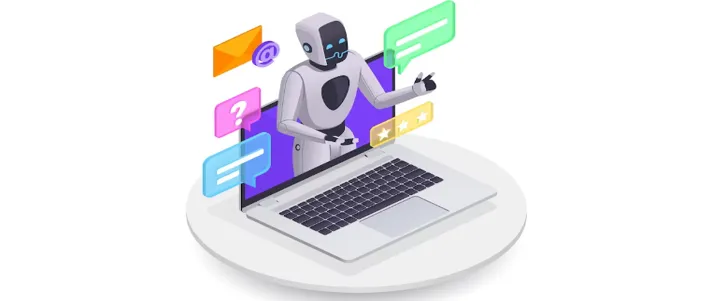
Email automation is a powerful tool that allows you to send the right message at the right time.
For instance, you can automate welcome emails for new subscribers, or re-engagement emails for old subscribers who haven’t interacted with your brand in a while.
Drip campaigns are a type of automated email sequence, where a series of emails are sent out on a schedule or based on specific triggers.
These campaigns can help you nurture leads, onboard new customers, or promote customer loyalty and engagement.
4. A/B Testing

A/B testing, or split testing, involves creating two different versions of an email and sending them to a small segment of your email list.
You can then analyze which version performed better in terms of key metrics like open rate, click-through rate, and conversion rate, and use the winning version for the rest of your email list.
This technique allows you to understand what resonates with your subscribers, enabling you to optimize your emails for better performance.
5. Integrating Email with Other Marketing Channels

While email is a powerful channel on its own, integrating it with other marketing channels can significantly amplify your results, and definitely want that.
For instance, you can use social media to grow your email list or use email marketing to drive traffic to your site, then turn new visitors into subscribers.
Analyze and Optimize
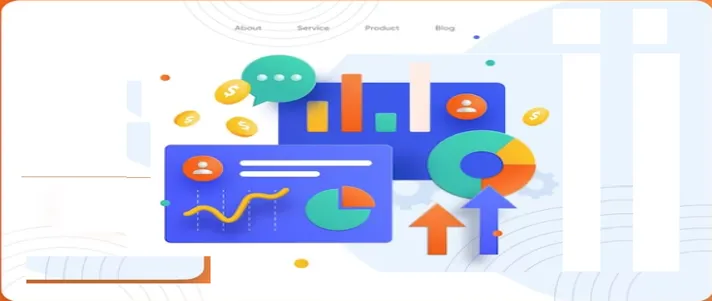
These are fundamental techniques, but they still, will work differently for everyone. You want to always analyze your outcomes and take your next actions based on that.
Learn and Repeat

Well, you guessed it, learn and repeat!
Navigating Email Marketing Laws

As an email marketer, it’s crucial to stay compliant with the various laws and regulations governing email marketing. The CAN-SPAM Act, GDPR, and CASL are a few examples of regulations you may need to adhere to depending on where your business operates.
These regulations cover aspects such as obtaining consent before sending marketing emails, providing a clear and easy way for recipients to opt out, and including your physical address in your emails.
Non-compliance can lead to fines and poor user experience, so it’s important to familiarize yourself with these laws and ensure your email marketing practices are compliant.
Final Thoughts
High Return on Investment (ROI), reach, and personalization; email marketing is undoubtedly a cornerstone of digital marketing.
However, like any other marketing strategy, it requires careful planning, execution, and analysis.
Also, remember there are usually four corners or more in every structure, which means that besides email marketing there are roughly three (3) more cornerstones.
For an effective and wholesome digital marketing experience, you can’t leave any stone unturned :).
- Email Marketing: We know about this one already. It’s all about reaching out to your customers right where they spend a lot of their time – their inboxes. It’s about keeping them up to date, starting conversations, and building relationships.
- SEO: Now, imagine you’re opening a new shop. Would you want it to be in a bustling high street or a hidden back alley? That’s what SEO does – it helps your website get the prime location on search engine results, making it easier for people to find you.
- Content Marketing: Think of this as being your brand’s storyteller. You’re not just selling products or services, you’re sharing useful information, telling engaging stories, and helping your audience in some way. This could be through blogs, videos, ebooks, podcasts – whatever form best resonates with your audience.
- Social Media Marketing: It’s where your brand can be a little less formal and a little more human. You can chat with your audience, get their feedback, share some fun behind-the-scenes stuff, or discuss trending topics. Plus, it’s a great way to show off your products and services in action.
- Pay-Per-Click Advertising: Ever seen those sponsored ads on Google or social media? That’s PPC. You pay a bit every time someone clicks on your ad. It’s like buying traffic for your website, but the trick is to make sure it’s the right kind of traffic.
- Influencer Marketing: You know those cool people on Instagram or YouTube with loads of followers? When they recommend a product or service, their followers listen. That’s the power of influencer marketing.
- Affiliate Marketing: This is like having a network of salespeople promoting your products. They drive traffic to your site and you pay them a commission for any sales made as a result.
- Mobile Marketing: More and more people are using their phones to do everything – from shopping to booking tickets to catching up on news. So, it’s important that your brand is mobile-friendly and that you’re reaching your audience through channels like mobile apps, SMS, and more.
- Video Marketing: People love videos. They’re easy to consume, they can be super engaging, and they’re shareable. It’s no wonder that platforms like YouTube and TikTok are so popular that more and more brands are using video as part of their marketing strategy.
- Data & Analytics: Last but not least, this one might not be a channel, but it’s the backbone of your strategy. It’s like your marketing compass. It tells you what’s working, and what’s not, and helps you make informed decisions about your future marketing moves.
Each of these pieces is powerful on its own, but when you start fitting them together in a strategic way, that’s when you really start to see the magic happen!
Of course, the perfect mix depends on your specific brand, goals, and audience.
Read our review of the best email marketing software and tools.
Conclusion
By understanding the fundamental aspects of email marketing, keeping up with the latest trends, and applying advanced techniques, you can make the most of this powerful marketing tool and pave the way for digital success.
Remember, the heart of email marketing lies in forging and nurturing relationships with your audience.
Always strive to deliver valuable, relevant, and engaging content to your subscribers, and they’ll reward you with their loyalty and business.
With the world becoming increasingly digital, email marketing is here to stay.
So embrace it, and let it steer your business towards uncharted territories of growth and success.
Frequently Asked Questions About EMAIL MARKETING
Email marketing is a form of digital marketing that involves using email to send commercial messages to potential and existing customers.
Email marketing can help businesses reach new customers, increase customer loyalty, increase brand awareness, drive website traffic, and generate more sales.
The best practices for email marketing include creating compelling content, segmenting your list, optimizing subject lines, personalizing messages, testing for optimal results, and using analytics to track performance.
An email list is a collection of email addresses that are used to send emails to potential and existing customers.
An email autoresponder is a system that automatically sends out pre-written emails to subscribers at predetermined times.

